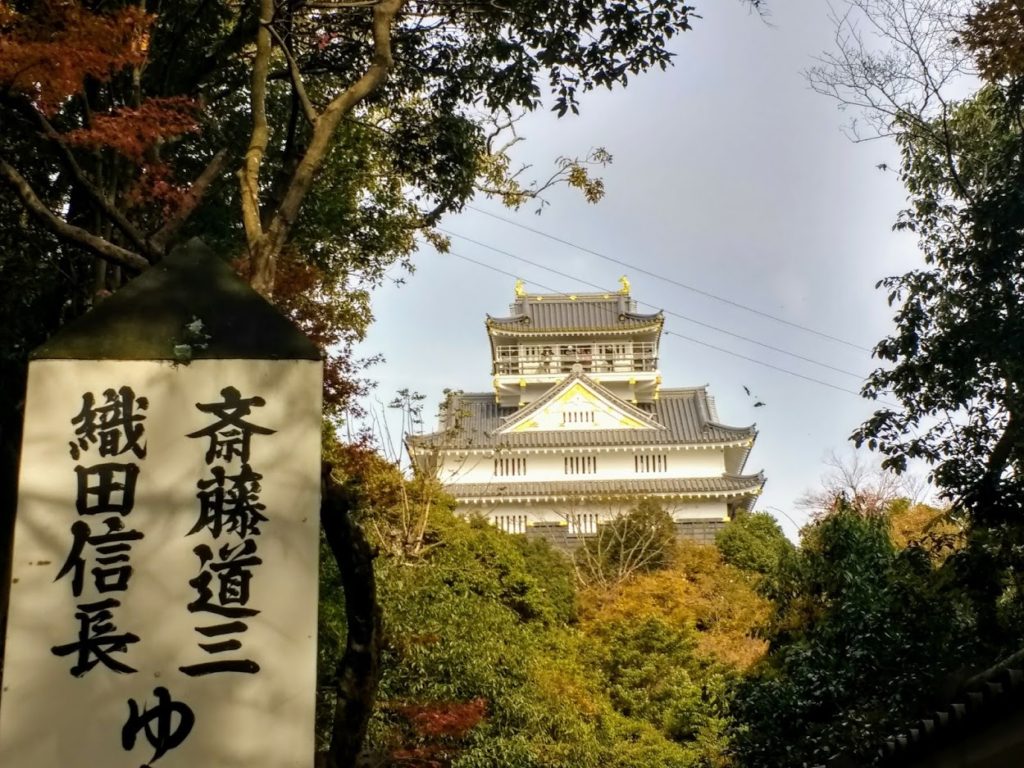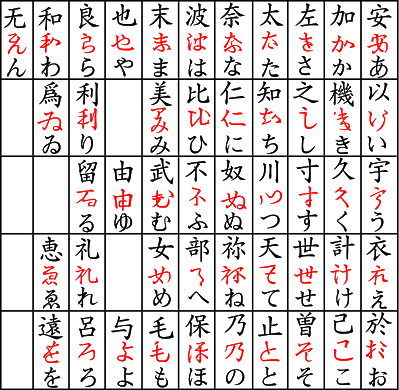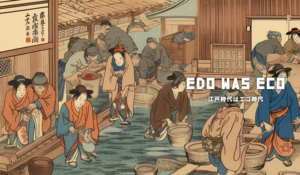
Japanese is often seen as a very difficult language to learn. This is because of its complex writing system (related to the Chinese one but also different), the variety in saying the same concept in different ways and the pronunciation which can result in tough for Western learners. To improve your Japanese, consider learning its history and its features from a linguistic point of view. Firstly, consider what is the best language learning method for you.
Scholars debate about the Japanese language.
One of the first things you should know when studying a language is where it is spoken and if there are similar languages. According to linguists, all languages in the world are categorized into groups or linguistic families based on their similarities and their historical changes. For example, English belongs to the Indo-European family, in the Germanic group, while Italian is in the same main family but in the Italic group.
Scholars had issues trying to figure out where the Japanese language came from: there is an open debate on which linguistic family to put it in because of its unique features. Some say it is the only member of the Japonic family; others say it has a relation with the Korean language; and a third opinion is that Japanese belongs to the Altaic family, which includes Turkish, Mongolic, Uzbek, and Kazakh. Therefore, most scholars agree to consider it an “isolated language” which means that no other relative language has been found. Other examples of isolated languages are Korean, Etruscan (an ancient, dead language of today’s Middle Italy), Basque, and Burushaski (North Pakistan).
Are there any similarities between Chinese and Japanese?
Logically, one would consider Japanese very close to Chinese because of their similarities in the writing system of Kanji and their related vocabulary. Most of the nouns are written with the same character both in Chinese and Japanese, or with very little differences. For example, for the noun “cat” you will use the character 猫 in both languages, but it’s pronounced neko in Japanese and māo in Chinese.
Other similarities are the numeral system, the use of a “classifier” to count nouns, or how to make a question in Japanese using a particle at the end of the sentence.
What are the differences between Japanese and Chinese?
Considering their grammatical structures, the results are different. First of all, the structure of the sentence is different. Chinese is an SVO language, meaning “Subject-Verb-Object”, referring to the order of words in a sentence. Chinese order matches the English one, while the Japanese one doesn't. The Japanese language has an SOV order, meaning that you’ll always find the verb at the end of the sentence.
Another difference is that, unlike Chinese, Japanese is an “agglutinative language”. In other words, the variable elements of the sentence, called morphemes (such as verbs and adjectives roots, nouns, adverbs, and particles) have their own meaning and tend to remain unchanged after their union with a word. Each morpheme has a unique grammatical value and can be recognized phonetically. For example:
- 面白い (omoshiroi – amusing/interesting) → affirmative form
- 面白くない (omoshirokunai – not amusing) → negative form
- 面白かった (omoshirokatta – was amusing) → affirmative past form
- 面白くなかった (omoshirokunakatta – was not amusing) → negative past form
- 面白かったら (omoshirokattara – when/if it is amusing) → hypothetical form
As you can see, the adjective’s root, おもしろ – omoshiro, remains unchanged in the affirmative, negative, affirmative past, negative past, and hypothetical forms. This process usually results in an easier pronunciation and a shortening of the word. Other agglutinative languages that share this characteristic are Turkish, Korean, Uralic languages, indigenous languages of the Americas, and others.
What are the Features of the Japanese Language?
To begin learning the Japanese language, there are some basic characteristics that you should know. One of them is the use of suffixes, which can be added at the end of verbs, adjectives, nouns, pronouns, adverbs, and even onomatopoeias. They specify the grammatical function. A clear example is the use of Japanese particles.
Major Japanese particles
As an agglutinative language, binding particles are placed next to a sentence’s element to clarify its grammatical function. These particles can also make clear the speaker’s mood and the punctuation, even replacing the question mark and the exclamation mark. Here are the most important ones:
1.私は学生です。 (Watashi wa gakusei desu. = I am a student).
The wa - は particle always states the subject of the sentence. Despite the fact that it is written "ha", it is pronounced, "wa".
2. ラーメンを食べます。 (Ramen wo tabemasu. = I eat ramen).
The wo - を particle (always pronounced "o") states the direct object.
3. お名前はなんですか。 (Onamae wa nandesu ka. = What is your name?).
The ka – か particle is always placed at the end of the sentence as a question mark. If you are a beginner, here are some tips to answer a question in Japanese.
4. この天ぷら大好きだよ! (Kono tempura daisuki da yo! = I really like this tempura!).
Where the yo – よ particle emphasizes the speaker’s enthusiasm or can be used for giving some advice:
あぶないよ! (abunai yo! = It’s dangerous!).
As you can see, particles か and よ are put at the end of the sentence to modify the overall sense: make a question or emphasize. Remember that there are other “ending particles” which you can use to speak Japanese more naturally.
Absence of gender and plural forms
Another major feature is that nouns have no gender or plural forms: you cannot make the plural of a word by adding an –s, like in English for example, because the “number” is comprehensible through the context or by adding the classifier directly. In some cases, you can add a particle to express the plural, especially with pronouns and nouns:
- とも - tomo, (a friend - 友) is singular; ともだち tomodachi (friends - 友達) is plural;
- おれ - ore, (I, referred to males); おれたち- oretachi (We, referred to males);
- かのじょ- kanojo (her); かのじょたち- kanojotachi (They, referred to females).
Implied subject and adjective conjugation
A very important difference between Japanese and Western languages, in general, is that in the former, the subject of a sentence is almost always implied: the use of pronouns is limited, and normally you can refer to someone using their name. For example:
あきこさんは何歳ですか。 Akikosan wa nansai desuka. = How old are you (Akiko-san)?
Another peculiarity in Japanese is that adjectives have a conjugation like a verb: by only saying an adjective, you can understand if the time is present or past:
たのしい! – Tanoshii! (it’s fun! 楽しい) → Affirmative present form.
たのしかった! - Tanoshikatta! (It was fun! 楽しかった) → Affirmative past form.

Learn to write and read Japanese.
Where did the Japanese writing system come from?
Traditionally, we know that Japanese writing was first introduced around the middle of the sixth century when Buddhism began to spread around Japanese islands. This marked the transition from prehistory to history. In the beginning, the first texts were naturally about religion and philosophy, trying to imitate Chinese writing. From the eighth century onward, texts were written in a local form, using phonographic signs which were called “kana” 仮名 (かな - kana). Today, this word refers to the Japanese system of syllabic writing.
Early Japanese chronicles: Kojiki and Nihon Shoki
It was in the eighth century that the two most famous chronicles of myth, genealogies about the imperial line, and oral tradition were written: the Kojiki (古事記 - こじき which literally means “records about the ancient facts”) and the Nihon Shoki (日本書紀 - にほんしょき “Japanese chronicles”).
They both contain songs and poems that narrate the origins of the first divine beings, with the tales of some Emperors of that period. The one who succeeded in winning the throne war and ruled from 673 to 686 was Emperor Tenmu: he managed to create a political system very similar to the Chinese one, and it is said that he commissioned the Kojiki to legitimize his political power. Both chronicles were written by mixing Chinese characters with an ancient form of Japanese, which was only oral at the time. It was indeed, thanks to these first attempts, that we can see the Japanese language how it is today.

The sign says "Saitō Dōsan" (the four characters on the right) and "Ōda Nobunaga" (the four on the left): the first one being an important Japanese samurai during Sengoku period, from 1467 to 1603; the second one being a famous daimyō regarded as the first Great unifier of Japan. We can see that proper names are written using only kanji in the Japanese language.
The three components of the Japanese language writing system
Japanese writing is maybe one of the most fascinating features of this language. It appears to be elegant and peaceful. Practicing handwriting is important because calligraphy itself is considered a creative activity in Japan. To illustrate, it is called 書道 (しょどう – shodō), literally meaning “the way of the brush”. It is so particular that some years ago there was a huge boom in Japanese writing overseas. In fact, everyone wanted to have a tattoo with their name written in Japanese. Nevertheless, in order to understand it successfully, you need to learn the three components of its writing system: Kanji, Hiragana, and Katakana.
漢字 ・ Kanji
漢字 ・ かんじ・Kanji: literally means “Han’s ideograms”.
Han refers to the Chinese Han dynasty, which ruled in China from 206 BC to 220 AD. As mentioned before, Japanese people adopted Chinese writing around the fifth or sixth century, adapting it with new pronunciation and forms. Over time, the ideograms were simplified as much as possible to write Japanese faster and more efficiently.
In modern Japanese, kanji are used to write nouns and the roots of verbs and adjectives. You can also put them together to create compound words:
月 ・ つき – (tsuki) is the kanji for “moon” but it is also used in
月曜日 ・ げつようび ・ getsuyoubi = Monday (so it means that Monday is the day of the moon).
The same kanji can be put at the end of some words because its second meaning is “month”: 一月 ・ いちがつ – ichigatsu = January (literally, “the month number one”).
How to read Japanese kanji
Notice that its pronunciation has changed. In fact, kanji have at least two (yes, there can be more!) different pronunciations. One comes from the Chinese pronunciation called
音読み ・ おんよみ ・ onyomi, used when the kanji is put near another kanji character.
The other one comes from the native Japanese pronunciation of that word, called.
訓読み ・ くんよみ ・ kunyomi, used when the kanji is alone or near hiragana.
Furthermore, remember that a kanji can have more than one onyomi and kunyomi reading.
And so, the kanji for moon is pronounced tsuki if read alone, but becomes getsu or gatsu if put near another ideogram. The one reading is one, while the kun readings are two!
Prepare yourself by making memory exercises to learn the Japanese language!
平仮名 ・ Hiragana
平仮名・ひらがな・Hiragana: it is a syllabic system developed in Japan during the ninth century, together with Katakana.
Both are simplifications of some kanji, based on the pronunciation of initial letters. For example: The vocal あ, derives from the kanji 安, which is pronounced “an”.
The kana な is the simplification of the kanji “奈”, read “na”, used for the famous Japanese city 奈良 – Nara.
And so on...
Hiragana’s kana are written with soft strokes and lots of bends and feel more “feminine” than katakana. In fact, it was created by women at the court during the Heian period (794 – 1185). There is also the cursive form of it, used in ancient periods and now by calligraphy experts.
Hiragana is used to complete verbs and adjective forms, particles, and sometimes words for which kanji is difficult to write. Here is a sentence:
私たちは日本語を勉強しています。(Watashi tachi wa nihongo wo benkyoushite imasu = We are studying Japanese).
As you can see, Hiragana completes the words given in kanji:
-たち is added after わたし (watashi = I) to make the plural form
は and を are particles used to state the subject and the direct object
-しています is a verb form used to express an action which is continuing in the present.
What more do you need?

The kanji simplification process which ended in the creation of Hiragana signs.
片仮名 ・ Katakana
片仮名・カタカナ・Katakana: Katakana is used to write foreign words and scientific names of animals and plants and emphasizes some words. It is interesting to know that, although katakana has the same signs as hiragana (but written in a different way), it has more phonetic possibilities than hiragana. For example, the famous Italian city of Venice, “Venezia” in Italian, it is written ヴェネツィア. You will not find the final sound “zia” written “つぃあ” in hiragana.
In Japan you will find lots of words with English origin written in katakana like:
パソコン (pasokon – personal computer)
デパート (depaato – department store)
パーティー (paatii – party) コーヒー (kōhī – coffee).
This image represents the origin of kana from Katakana. To learn the Japanese language, you will need to memorize the Katakana syllabic system as well.
How to learn Japanese with the We method
Up to this point, you might have figured out that the Japanese language is not so easy to learn. You will need to memorize kanji, their meanings, their different readings, and unique grammatical structures and practice them a lot. Otherwise, it’s also very interesting and quite fun once you get started! Check our students' opinions on how and why they decided to learn the Japanese language.
Surely, in learning the Japanese language, many students enjoy writing kanji and studying where their meaning came from based on how it is composed. It is a language that originated in a fascinating country whose culture is becoming more and more popular around the world: famous food, anime, manga, video games, samurai, bushido, shintō… and Godzilla! Everyone can find something interesting about this country. Moreover, this is the starting point to learning it faster: being passionate about something will help you improve quickly. This is the method used here at We Language School: a student-centered method, where our Japanese teachers (coaches) take care of your personal interests and organize your lesson based on what you want to learn and need to learn... After each lesson, we’ll make sure you achieve what you want to learn to make you satisfied.
Hope you enjoyed this article and learned more about the Japanese language!
Author: Valeria (graduated from Ca’Foscari University Japanese Studies)


